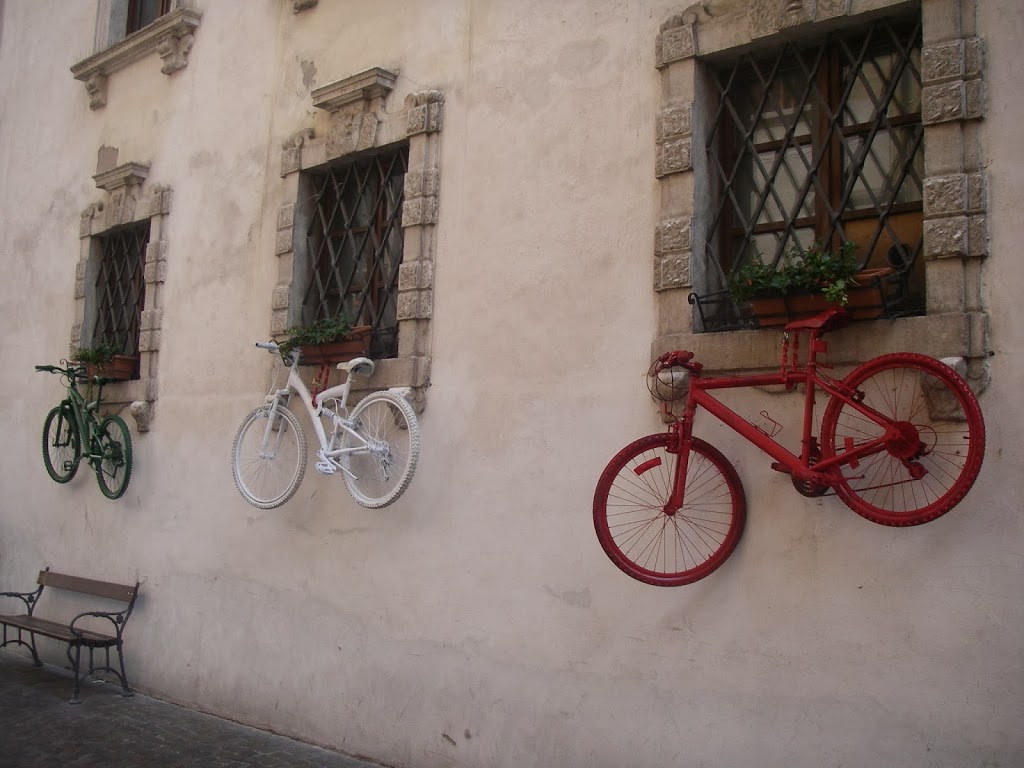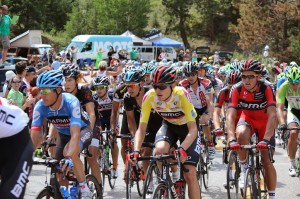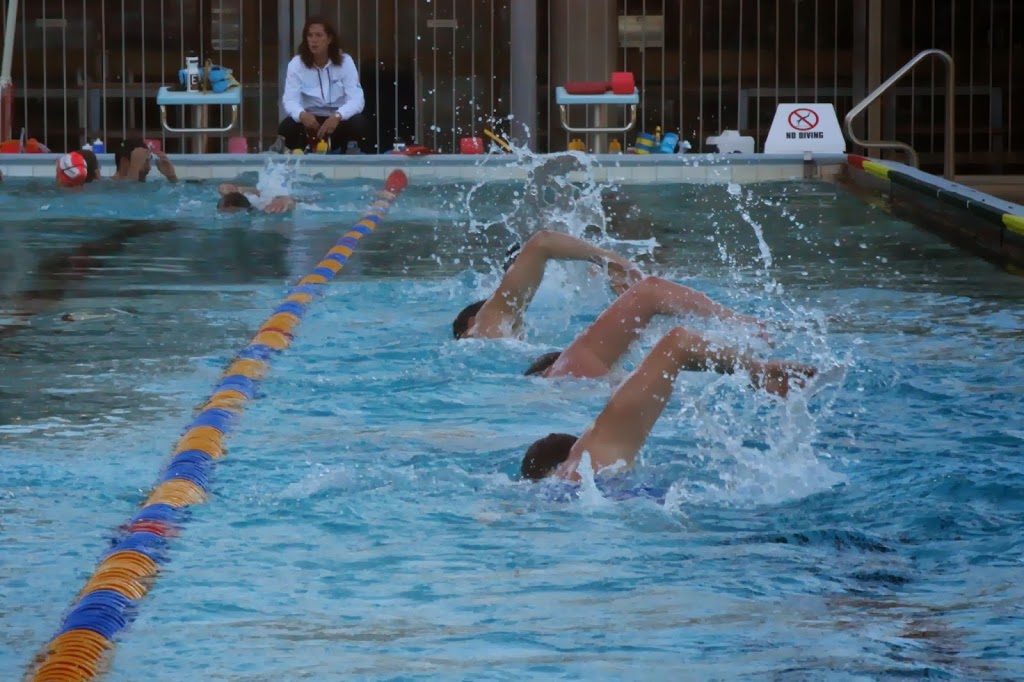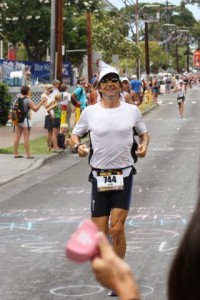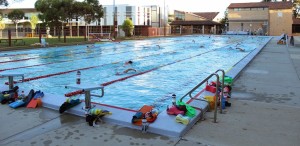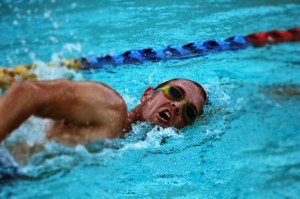Blog
Aquathon… Triathlon without the bike
One of the wonderful things about being a multisport athlete is there are endless ways to create workouts and have fun doing so. One order to combine events is by doing a swim/run or the more common term, aquathon. Competing in aquathon events is gaining popularity among athletes that are looking for new challenges in the multisport world. Some people love to swim and run as part of the fitness regime but when it comes to the bike have no desire, do not have a bike or can't afford one. Let's take a little closer look at some of the basics of aquathon.
For the swim/format, either a 1/3 - 1/2 mile swim, 3.1 mile run or 2/3 - 1 mile swim, 10K bike seem to be popular. Really any combination of distances could work predicated on the venue you are using. The swim part can be challenging because of limited access to water sometimes.
Time - It takes less time to train for an aquathon than a triathlon as the athlete is saving hours by not having to train for the bike portion of a triathlon which is close to 50% of most races.
Training - You can pretty much run anywhere it is just a matter of finding a lake, ocean or pool to swim in. If you're lucky to live near a fitness center with a Vasa Ergometer or have your own, you can complete your swimming and even stay dry. No cap, goggles, or bathing suit so you can already be dressed in your running stuff ready to go!
Variety - Along the lines of training, there are endless ways to combine events, based on distance, time or both to get a great workout and work on transitioning from one sport to another. One thing I used to enjoy doing when I lived in Kona, Hawaii was run to the ocean or pool as warm up, then do my swim workout, then run home either as an easy cool down, or a hard run if I was feeling spry. Just the opposite of that, some days a swim warm up, followed by a run, followed by a swim cool down was a great training session and swimming I have found over the decades is great way to finish off any run session.
If you ever have the chance to travel to Kona, head down to the pier for a swim, then a run along Ali'i drive. Great way to start the day. They have swim/run events from time to time their as well and they are free. More info, check out http://bigislandraces.com/extras/peaman-events/
For more questions about Aquathon, how to set up a training plan for it or questions in general about training, please contact me at eric@coachericneilsen.com
Make it a great week,
Coach Eric
Triathletes and training the other strokes
Recently I was asked if triathletes should train the other strokes from time to time and my answer was YES! Swimming is the most technical of the three sports in triathlon and requires the athlete to learn to be one with the water. Often times you will hear coaches talking about "the feel" of the water and one way you can enhance this feel is by training the other strokes from time to time. In case you don't know what those other strokes are they would be butterfly, backstroke and breastroke. If you do those three strokes in order and then add the freestyle, you would then being doing an Individual Medley or IM for short.
- Great for recovery swimming between sets stretching out the chest and shoulder muscles.
- Helps connect the core to the pull as your body rotates and shoulder shifts similar to freestyle
- Teaches the swimmer to kick with long legs and loose ankles
- In the open water sometimes 4-6 strokes on your back in a long swim will give your freestyle muscles just enough of a break to maintain a good solid pace when you roll back on your stomach. Lastly, if you are swimming an ocean race and have to come thru surf to finish, you can roll on your back for a couple quick strokes to check the waves behind you and possibly catch a free ride into the beach.
- The pull pattern is similar to freestyle except now you are pulling with both arms at the same time and your body is moving through the water in an undulating motion like a dolphin instead of rotating from side to side.
- Great stroke for helping swimmers develop power when repeats are done in short increments like 4 strokes, 12 1/2 or 25 for advanced athletes that can hold form.
- Using the undulating motion of butterfly is great for dolphin dives at the beginning of a swim (beach start or shallow water) and exiting the water.
- Great for loosening up the hips, knees and ankles.
- Because of the difference in the kicking motion, be careful when swimming breastroke and make sure you are warmed up before trying any harder kicking.
- The arm pull on breastroke outsweep and insweep, is a great way to enhance feel for the water and really give the forearms a good workout.
A simple set you can do to incorporate the other strokes would be 3 rounds of
Bike Workout + Time Crunched = Tempo Time
 |
| Cruiser bike works good in snow with tires at about 10psi |
I decided to stay with the cycling theme after last week as many people are having to ride indoors this time of year. Multisport athletes are usually time crunched between the training and everything else that occupies there waking day. So, when time is short, get some bang for your buck with some tempo work. Tempo pace is what I like to call "comfortably hard". You are working but it is something you could sustain if needed for close to 60 minutes.
Here is a great workout I like that takes about 60-65 minutes depending on how long you cool down.
Triathletes and Group rides
As a triathlete, joining a group ride from time to time can have some great training benefits. But, joining a larger group for the first time or a group you don't know can be a bit scary. I came across an informative article today by Katya Meyers, professional triathlete and coach. She points out 5 things that are just good common sense not only for triathletes joining a group, but anyone riding in the group to help keep things safe while getting a good workout.
Check out this link when you have a minute
benefits-of-group-rides-for-triathletes
In the meantime, keep having fun with your training, sticking to any resolutions for 2014 and as always, make it a great week.
Coach Eric
Swimming, keep it simple…do the work!
A set of this length is a great reference set to use from time to time. Maybe early in the season you can handle the set on a 1:30 per/100 base. With some training, in 3-4 weeks you may try it again one of two ways: bring that down to a 1:25 base per 100 or keep the base at 1:30 per 100, but try to swim at a faster pace than the first time. If you can achieve either of these, then chances are, your swimming fitness has improved.
Along with some longer endurance sets this time of the year, consider one workout every week or two that you devote more time to swimming the other strokes. This will help your feel for the water, provide a great workout using muscles a bit differently and giving your freestyle muscles a little break.
Keep blowing bubbles and have a great week!
Coach Eric
Re-post… Stress + Rest = Progress
With the sun setting on 2013 this week, many people will be setting New Year's resolutions. In the health and fitness industry, we see a huge surge at the gym. Masters swim programs, running and cycling groups all see an increase in activity and workout participation. So, I thought it would be a good time to share the post form earlier in the year as a reminder to keep the balance with your training. This will hopefully allow you to stay healthy which leads to consistency in training which leads to you reaching your goals for the 2014 year.
2013…almost history. The future… a mystery!
The end of the calendar year is often a time to look back and reflect on what has transpired the past 365 days. So, before the year comes to an end in 8 days, I challenge you to set a side a little time to reflect back on what 2013 has meant to you and answer this one question before getting too carried away with thinking ahead to 2014.
Do you know why you do what you do?
If you know the why, then the how you do it and what you do will take care of themselves. This could be applied to many aspects of one's waking life such as work, school & sport to name a few.
If 2013 was a year you considered successful, then keep building on that momentum. If the year had some bumpy patches, try to learn from those experiences and bring that new knowledge forward into 2014.
Run… The hour of Power
Catching up with Kyle in Cottesloe, Australia
Last week, I dropped in on a swim squad that Kyle trains with from time to time and snapped a few pics from his last long session (a little over 7K) before IM Western Australia. This particular squad is in preparation for the biggest open water swim in this part of Western Australia, the Rottnest Channel Swim next February. After the session, we sat down and chatted more about his training.
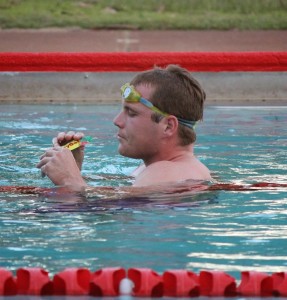 |
| What is he saying to that gel? |
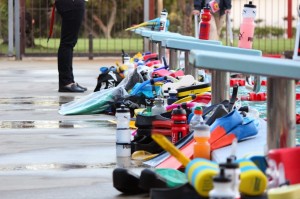 |
| Lots of gear to choose from
Just like this pic! Anything else you would like to add?
Kyle - Don't under estimate the logistics of training and the time commitment of Ironman and endurance sports. A good way to be efficient with my cycling training was commuting to Uni. Sometimes as a recovery from a workout, other times serving as a warm up for a workout. Set up your training groups to help you stay on task and motivated in the training. We usually have a large group that heads down for the 1/2 IM every year now and a little healthy competition can be a great motivator.
|


